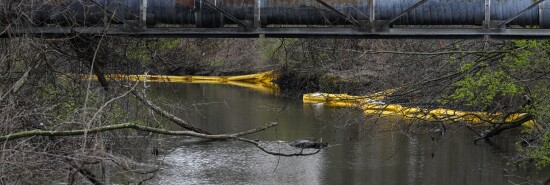
Water contamination scares shed light on federal water quality issues
Christine Queally
Video Embed
Water quality issues are increasingly coming to light across the U.S. after two major chemical-related incidents led to safety concerns.
Most recently, Philadelphia residents were put on high alert for three days about possible contaminants in their drinking water thanks to a latex product spill in the Delaware River.
PHILADELPHIA OFFICIALS WARN RESIDENTS AGAINST DRINKING TAP WATER AFTER DELAWARE RIVER CHEMICAL SPILL
However, ambiguous messaging from public officials about the drinking water and the lingering aftermath of the recent train derailment in East Palestine, Ohio, led to skepticism among Philadelphia residents.
“After we saw what happened in Ohio, and this is a similar type of contamination, I don’t trust them. I don’t believe them,” one social media user said.
https://www.tiktok.com/@ugoomero/video/7214957289399143722?lang=en
Another user questioned: “So, Philly had a chemical spill in its water, and they’re telling folks not to buy bottled water [because] the water is safe to drink after telling them to buy water not even 24 hours earlier. The water got clean in less than a day?”
In the days after the East Palestine train disaster, there were fears that the water supply was contaminated by the chemical release, and many opted to drink only bottled water.
Gov. Mike DeWine (R-OH) released a statement on Feb. 15 assuring East Palestine residents there were no toxins found.
“With these tests results, Ohio EPA is confident that the municipal water is safe to drink,” the statement said.
Almost two months later, some residents are still doubtful that their drinking water is completely safe and have reported lingering symptoms in the wake of the disaster.
Amid a national conversation about water quality concerns, the Senate voted last week to cancel a Biden administration rule that defines which bodies of water are held to federal standards under the Clean Water Act.
On Thursday, President Joe Biden vetoed the legislation, but fewer waters in the United States would have been subject to federal water quality regulations had it passed.
The current recommended water quality standards are set by the EPA, and they apply to water that is in any way related to consumption.
“Such designated uses can include, but are not limited to, consumption of fish or shellfish (including consumption associated with fishing or shellfish harvesting), and protection of sources of drinking water,” the EPA handbook reads.
However, the Safe Drinking Water Act does not specify a set time or date when water samples must be taken to ensure they are in compliance with EPA standards, and the EPA’s list of harmful contaminants is also only required to be reviewed every five years.
According to Oceans Advisory Council Member Ashley Suarez-Burgos, states can test water multiple times within the allotted time and report the sample with the lowest level of toxins or contaminants.
Suarez-Burgos said that toxicity levels are constantly changing, and because states are not required to report them regularly, there could be adverse effects.
“We don’t know what the long-term levels are, and it seems like we’re willing to risk public health,” she said.
In the areas surrounding East Palestine, public officials have pointed out the water quality testing that has been conducted is only representative of the short-term effects of the derailment disaster.
In a community forum, Richard Negrin, Pennsylvania secretary of the Department of Environmental Protection, said that although no discernable levels of toxins had been found in the water supply yet, continued testing was needed.
“I want to be really clear about what that means. That’s about short-term exposure, about the incident and then the burn. That does not mean we’re going to let our guard down about what we’re going to do going forward,” he said.
“Groundwater takes a lot longer than just a few weeks in order to see if anything from the site that has occurred, because of the distance, is going into the groundwater in Pennsylvania.”
Individual states are also not necessarily held to the EPA’s water quality standards, either. States can set their own standards by “adopt[ing] unique criteria to reflect site-specific conditions or us[ing] scientifically-defensible methods to develop their own criteria.”
Even then, some water treatment is done by private companies that aren’t held to state regulations at all.
Areas with outdated sewer and waste management systems also pose a great risk to the health and safety of the country’s water slated for consumption. As natural disasters and extreme weather events in the U.S. increase every year, waste management systems sustain more damage, increasing the potential for leakage and water contamination.
CLICK HERE TO READ MORE FROM THE WASHINGTON EXAMINER
There is also no international consensus about clean water standards. So, water sources that share borders with the United States, such as the Rio Grande on the border between Texas and Mexico, can be regulated by one country and polluted by another.
In the face of two major water quality scares within months of each other, it is unclear whether regulations set by the federal government are being enforced properly and whether water quality around the U.S. could be suffering as a result.
